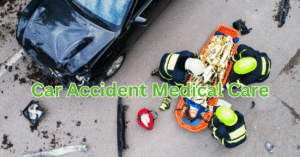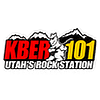Car Accident Medical Care

Move to a safe spot, call 911, take photos, and swap details. See a doctor the same day, even if pain feels light. Track symptoms and bills, tell your insurer, and consider speaking with a Utah car accident lawyer for next steps.
A crash shakes up your day and your body. In the first hours, you might feel fine because of adrenaline. Later, stiffness or headaches can roll in. The best move is simple. Get checked by a doctor right away, then follow a steady plan for care.
Utah has special insurance rules that help with early medical bills, and there are clear steps to protect your health and your claim. This guide walks you through care, delayed pain, records, Utah rules, and smart recovery habits. It also explains when to ask for legal help. Therefore, you can focus on healing while someone else handles forms and calls.
Key Things You Should Know
- Get a same day medical exam after a crash
- Pain can show up hours or days later
- Be honest about all symptoms, even small ones
- Follow your treatment plan and keep records
- Utah PIP usually covers first medical costs
- Report injury crashes and larger damage in Utah
- Know basic time limits to file a case
- Call a trusted legal team if bills rise
See a doctor today, even if pain feels light
Why does a same day exam matter?
Adrenaline can hide pain after a wreck. A quick exam can spot issues like concussion, whiplash, or internal injury and set a clear plan. Tell the provider you were in a car crash. So they can order the right tests. In Utah, many injury claims start with your own auto policy’s Personal Injury Protection, which helps with early medical bills before you pursue the at fault driver if your case qualifies. Utah law also sets when you can step outside no fault, such as when medical bills go over three thousand dollars or when a serious injury is involved.
ER, urgent care, or primary doctor
Visit the ER for heavy bleeding, significant head strike, chest pain or trouble breathing, new weakness or severe neck or back pain. Non-emergent pain can be sent to urgent care or with your primary doc that day. Look for things like headaches, dizziness, light sensitivity, feeling foggy or difficulty with memory. They may present soon after exposure or up to hours later, and the majority of individuals recover over weeks with the appropriate plan.
What to bring and how to talk
Bring ID, insurance cards, and any scene photos. Explain every symptom, even small ones. Ask for written discharge notes and keep copies. These records help your providers guide care and help any claim.
Treatment steps that support steady recovery
Early care you may hear about
Your provider may recommend brief rest, ice or heat as appropriate, safe pain relief and exercise. Research shows that for neck sprains and other soft tissue injuries, carefully supervised activity (not long rest) brings better results. X rays or MRI imaging may be necessary to rule out the potential of a serious problem. Adhere to the plan: Inquire regarding pain control, range of motion and return to work or school goals.
Home habits that help
Get enough sleep and remember to drink water; it is only a protein meal away for the next training session. Use medicines only as directed. Get a simple pain/activity diary and record symptoms, activities, and factors which exacerbate or alleviate the symptoms. Use for only 5 mins if experiencing a headache. Check with your provider before you lift heavy objects, engage in sports activities, or drive long distances.
Mental health counts
After a crash, people often feel anxious or have poor sleep. Share mood or sleep changes with your provider. Short counseling, breathing routines, and a steady schedule can help. If concussion symptoms such as brain fog or light sensitivity linger, ask about a follow up plan from a clinic that treats head injuries.
Delayed pain after a car accident
Why pain can show up later
Muscle guarding and swelling build over time. This is why neck, back, or head pain may show up the next day or later in the week. Do not try to tough it out. Return for care and update your records so your plan fits your symptoms.
Keep a simple symptom diary
Keep a daily journal of your activities, symptoms, and date every day. Bring the diary to checkups so your provider can adjust treatment and document progress.
Utah rules, reports, and the money side
How Utah no fault works
Utah uses a no fault system for early medical bills. Personal Injury Protection on your policy helps with initial medical expenses after a crash, no matter who caused it. You can seek more from the at fault driver if your case crosses Utah’s threshold, like more than three thousand dollars in medical expenses, a bone fracture, disfigurement, dismemberment, or a lasting disability.
When you must report a crash
Call law enforcement from the scene when anyone is hurt or killed, or when property damage looks to be at least two thousand five hundred dollars. Officers who investigate file an electronic report within ten days after they finish, and the state can ask an involved driver to file a report as well. Ask for the report number because it helps with insurance and records.
Simple recovery tips that most people can follow
Keep treatment on schedule
Go to every follow up. Missing visits can slow healing and may cause the insurer to question your claim. If you cannot make an appointment, reschedule and keep proof.
Move with a plan
Ask your provider for a home exercise plan. A few minutes of gentle, frequent movement is often better than long, hard sessions early on. Add time and effort only when your provider says it is safe.
Protect your claim while you heal
Save every receipt, from co-pays to over-the-counter items. Keep a mileage list for medical trips. Be careful on social media while you recover. A Utah car accident lawyer can explain common pitfalls and how to avoid them.
Hire the best Utah car accident attorney for your case
Right now your job is to get better. A seasoned guide can take the stress off your plate. A Utah car accident attorney can gather records, line up bills, and protect access to PIP benefits. They can talk to adjusters for you, spot gaps in a report, and reach out to witnesses early.
They also help you avoid mistakes, like giving a recorded statement too soon or skipping follow-ups that the insurer expects to see. When medical bills climb over Utah’s threshold or injuries are serious, a lawyer can prepare a strong claim while you keep your treatment on track. If you are unsure, most firms offer a free, short call so you can ask questions and feel heard.
Chris Cockayne and the team at Cockayne Law
People want clear answers after a wreck. Chris Cockayne and his team at Cockayne Law focus on that. They help clients find the right clinic, confirm follow up care, and gather the records and bills that show the full picture. The team understands Utah’s no fault rules and how to work with both auto and health insurance, so treatment keeps moving. They talk with treating providers to make sure injuries are recorded the right way, which supports good care and a clean file.
On the insurance side, they handle calls, set fair expectations, and push for full value backed by records. That includes medical costs, lost income, and the impact pain has on daily life. If your case crosses Utah’s threshold or involves a serious injury, they prepare for negotiation or filing and keep deadlines in sight. If you are comparing Utah car accident attorneys, meet with a few and choose the one who listens well. Also, choose the one who explains the next steps simply, and treats your health as the top priority.
Final Thoughts
Health comes first, every time. Demand your same day, follow the plan, and notify if symptoms change. Gather photos, logs, and receipts in a dedicated place. Utah PIP pays part of your medical bills only, but you may need more if you have extensive injuries or if the threshold is exceeded.
A Utah car accident lawyer can take calls, forms, and timelines completely off your plate if the process feels heavy for you. About good care, honest records, and steady follow-ups – this is the path back to normal.
FAQs
What is Utah PIP and how does it help?
Personal Injury Protection is no fault coverage on your auto policy. It helps pay early medical costs after a crash, no matter who caused it. You can step outside no fault if your medical bills exceed three thousand dollars or you suffer a listed serious injury.
Do I need to report my crash in Utah?
Call police when anyone is hurt or killed, or when property damage looks to be at least two thousand five hundred dollars. Officers file a report after they investigate, and the state can ask you to file a report as well. Ask for the report number.
How long do I have to file an injury case?
Many car related injury lawsuits in Utah must be filed within four years. Some claims have shorter periods. Consult a lawyer early so that you do not miss a deadline or lose important proof.
What records should I save for insurance?
Keep medical notes, imaging results, prescriptions, work notes, receipts, and a mileage list for appointments. Save crash photos and the police report. A simple folder on your phone or laptop makes sharing easy when asked.
When should I call a lawyer?
Call early if you have more than minor pain, missed work, rising bills, or a disputed fault claim. A Utah car accident lawyer can protect your PIP benefits, guide you on what to do, and help you meet deadlines while you focus on care.
What exactly is the Utah threshold to sue the at fault driver?
You can seek pain and suffering only if you meet Utah’s threshold. That includes medical bills over three thousand dollars, a bone fracture, permanent disfigurement, dismemberment, or permanent disability or impairment based on objective findings.








